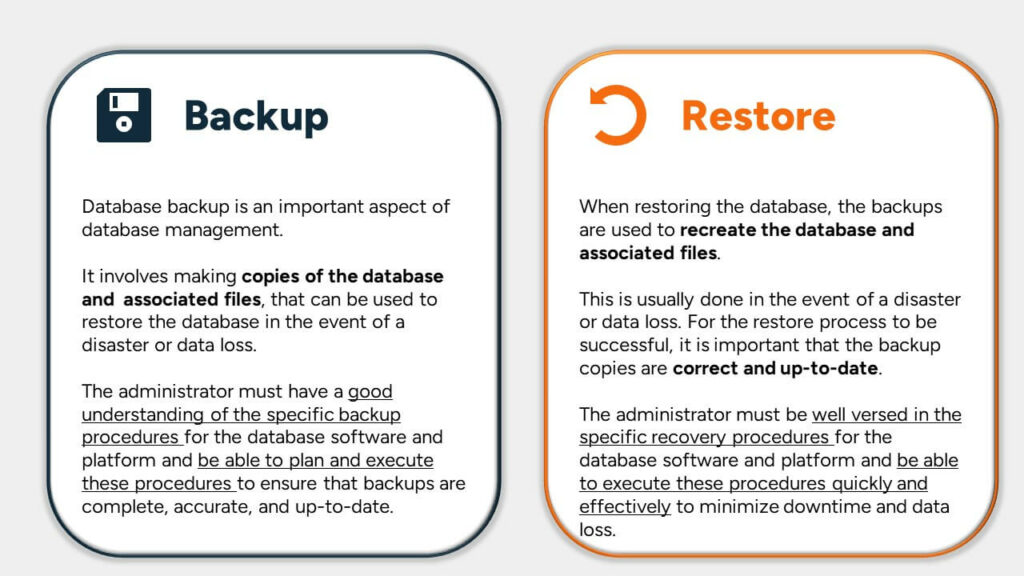Database Backup and Recovery

Backup
Database backup is an important aspect of database management.
It involves making copies of the database and associated files, that can be used to restore the database in the event of a disaster or data loss.
The administrator must have a good understanding of the specific backup procedures for the database software and platform and be able to plan and execute these procedures to ensure that backups are complete, accurate, and up-to-date.
Restore
When restoring the database, the bakups are used to recreate the database and associated files.
This is usually done in the event of a disaster or data loss. For the restore process to be successful, it is important that the backup copies are correct and up-to-date.
The administrator must be well versed in the specific recovery procedures for the database software and platform and be able to execute these procedures quickly and effectively to minimise downtime and data loss.
Backup and Recovery Planning
Backup and recovery planning is an essential part of the backup and recovery process.
This includes determining the frequency of backups, the backup method and the data to be backed up.
The administrator must have a good understanding of the specific backup and recovery requirements for the database software and platform and be able to create a comprehensive backup and recovery plan that takes into account the specific needs of the organisation and its data.
Testing
Testing the backup and recovery process is critical to ensure that it works as expected.
This includes testing the backup copies to ensure they are complete and correct, and testing the restore process to ensure it works as expected.
The administrator must have a good understanding of the specific testing procedures for the database software and platform and be able to perform these tests and make the necessary adjustments to the backup and restore process.
Automation
Automating the backup and restore process can help simplify the process and ensure that backups are performed consistently and on time.
Automation can include the use of scripts or software tools to automate backup and restore operations, as well as monitoring the backup and restore process to ensure that it runs smoothly.
The administrator must have a good understanding of the specific automation requirements for the database software and platform and be able to implement and maintain an automated backup and restore process.
Note
-
The process of backing up and restoring databases and database software can vary by vendor, platform and operating system. Therefore it is important that you follow the vendor’s specific instructions for backing up and restoring the database on your system.
Staff must have the necessary technical skills and knowledge to perform the backup and restore process, taking into account the demanding and complex knowledge requirements of this work.
A professional database management service can help ensure a smooth and successful backup and recovery process, minimise downtime and ensure the protection of important data.
